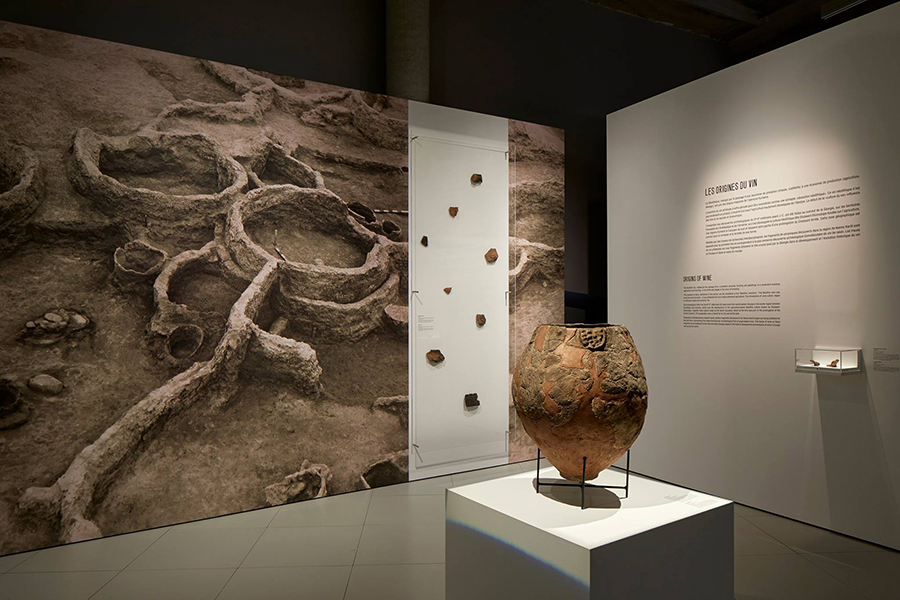
Georgia, which is situated between Europe and Asia, is considered to be a cradle of vine and wine since the ancient times. The culture of wine derivation was germinated in Georgia. This fact is confirmed by the archeological discoveries, such as: jugs, in which grape stones are remained, wine squeezing equipment, clay and metal vessels, which are dated before VI-VII BC.
Georgian wine-making history is connected directly to the history, culture and religion of the Georgian people. For example, when St. Nino arrived in Georgia to preach Christianity she held vine cross tied up with her hair.
Furthermore, the Georgian’s creative nature and particular love for vine and wine were expressed in Georgian habits, architecture, ornaments, metalwork, painting, poetry, songs and other fields of art. Georgia is considered to be home of vine-growing and wine-making and a zone of producing high quality wines. History confirms that there were existed about 525 breeds of grapes on the territory of Georgia Exclusiveness and uniqueness of Georgian wine is supported by the convenience of natural conditions. All kinds of climate types existing on the Earth can be found in Georgia. Such kind of varieties are conditioned by our country location, situating on the boundary of subtropical and temperate climate zones. There is a fertile soil for the vine, the Caucasian Mountains do not allow cold air to enter from the North. The Black Sea influence is also very important.
Georgian traditional Qvevri wine-making method is the part of UNESCO’s Intangible Cultural Heritage
Qvevri wine-making is practiced throughout Georgia, particularly in village communities, where unique varieties of grapes are grown. The Qvevri is an egg earthenware vessel used for making, ageing and storing the wine. Knowledge and experience of Qvevri manufacture and wine-making are passed down by families, neighbors, friends and relatives, all of whom join in communal harvesting and wine-making activities. Children learn how to tend the vines, press grapes, ferment wine, collect clay and make and fire Qvevris through observing their elders. The wine-making process involves pressing the grapes and then pouring the juice, grape skins, stalks and pips into the Qvevri, which is sealed and buried in the ground so that the wine can ferment for five to six months before being drunk.
Most farmers and city dwellers use this method of making wine. Wine plays a vital role in everyday life and in the celebration of secular and religious events and rituals. Wine cellars are still considered the holiest place in the family home. The tradition of Qvevri wine-making defines the lifestyle of local communities and forms an inseparable part of their cultural identity and inheritance, with wine and vines frequently evoked in Georgian oral traditions and songs.